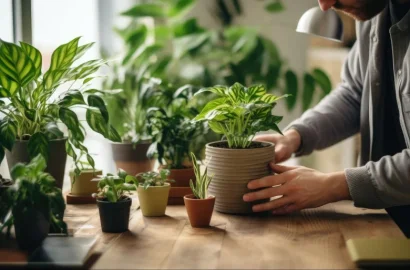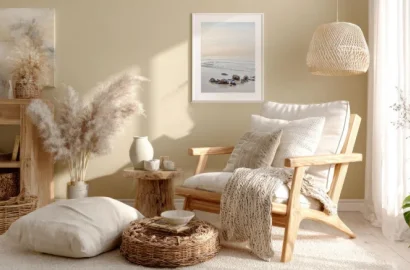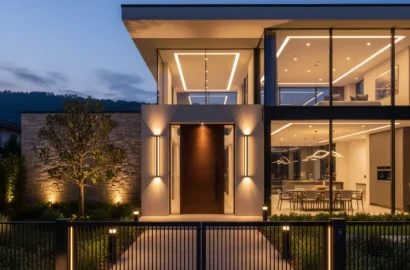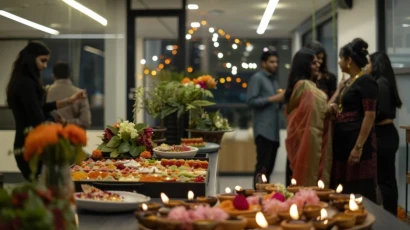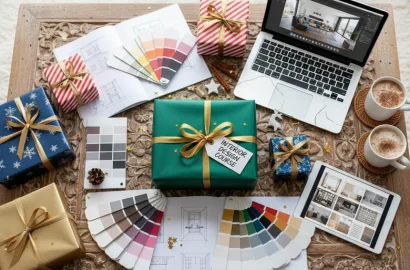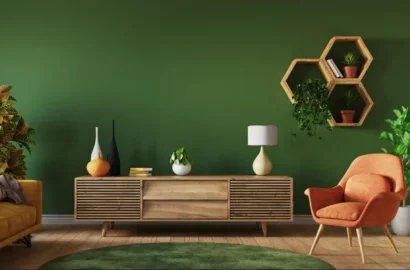Curious to know the difference between interior decoration and interior design? In this guide, we’ll be covering both fields in detail, before guiding you through what a career as an interior designer or interior decorator will entail.
If you’ve been wondering about the difference between interior design and interior decoration then you’re at the right place. In this article, we’ll be covering the key differences between these two fields and finishing up with what a career as an interior designer or interior decorator looks like in practice, along with training requirements, salaries, and demand.
These are the subjects we’ll be covering:
- 1) What is interior design?
- 2) A brief history of interior design
- 3) Interior design principles
- 4) What is interior decoration?
- 5) A brief history of interior decoration
- 6) Interior decoration principles
- 7) What are the differences between interior design and interior decoration?
- 8) What does an interior designer do?
- 9) Key skills of the interior designer
- 10) What does an interior decorator do?
- 11) Key skills of the interior decorator
- 12) What are the differences between interior designer and interior decorator roles?
- 13) Educational requirements of interior designers vs interior decorators
- 14) Which career is right for you? Interior design vs interior decoration
- 15) Demand for interior designers and interior decorators
- 16) Salaries of interior designers and interior decorators
- 17) Why interior designers can become interior decorators but not vice versa
- 18) Conclusion
Ready to learn more? Then let’s get started!
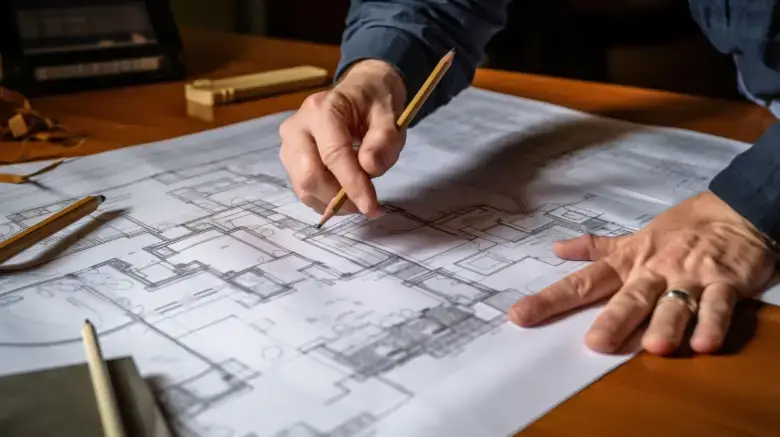
1. What is interior design?
Interior design is concerned with the beautification and functional enhancement of an indoor living or work space to make that space more visually appealing, accessible, functional, and safe for its inhabitants. In addition to the selection and arrangement of decorative items, furniture, and fabrics, a central aspect of interior design is addressing the needs of those who use a space, meeting accessibility guidelines, and enabling each individual who uses the space to meet their goals intuitively.
A brief history of interior design
Evidence of interior design can be found as far back as early civilizations, with the ancient Egyptians, Greeks, and Romans decorating their homes and other living spaces with intricate fabrics and handcrafted mosaics to create more beautiful and comfortable interiors. During the Renaissance in 17th century Europe, interior design became a way for those with means to display their wealth and status, with luxurious and exotic materials used in home furnishings and interior decoration.
Functionality and simplicity became central elements of interior design during the 19th and 20th centuries as a byproduct of industrialization. Minimalism also gained in popularity, beginning as an artistic movement after the second world war and rising to prominence as a design aesthetic during the 1960s and 1970s.
Today, sustainability and concerns surrounding the environment are key trends in interior design as the impact of and conversation around the climate crisis has encouraged changes in consumer behaviour and how materials are sourced and used. Creating productive working areas and boosting well-being within the home are also popular themes, as technological advances and increased flexibility in how we work have led to larger numbers of professionals choosing to work from home.
Principles
Interior design is supported by a set of core principles that interior designers follow to ensure an aesthetically pleasing and highly functional outcome for their clients.
Balance
Creating the impression of equilibrium throughout a living or working area is a central component of interior design. This balance can be achieved by placing objects and furniture as evenly as possible, with attention paid to the “visual weight” in the room experienced by inhabitants.
Unity
All objects within an interior should be unified. This look is created by interior designers through the creation of a flow between rooms, and selecting objects, colours, and pieces of furniture which complement the interior they’ve been placed in, rather than alienating it.
Rhythm
Rhythm in interior design is concerned with patterns and repetition of decorative elements throughout a space. Consistency here is key. This is achieved with similar elements, colours, and objects repeated or mirrored in multiple rooms.
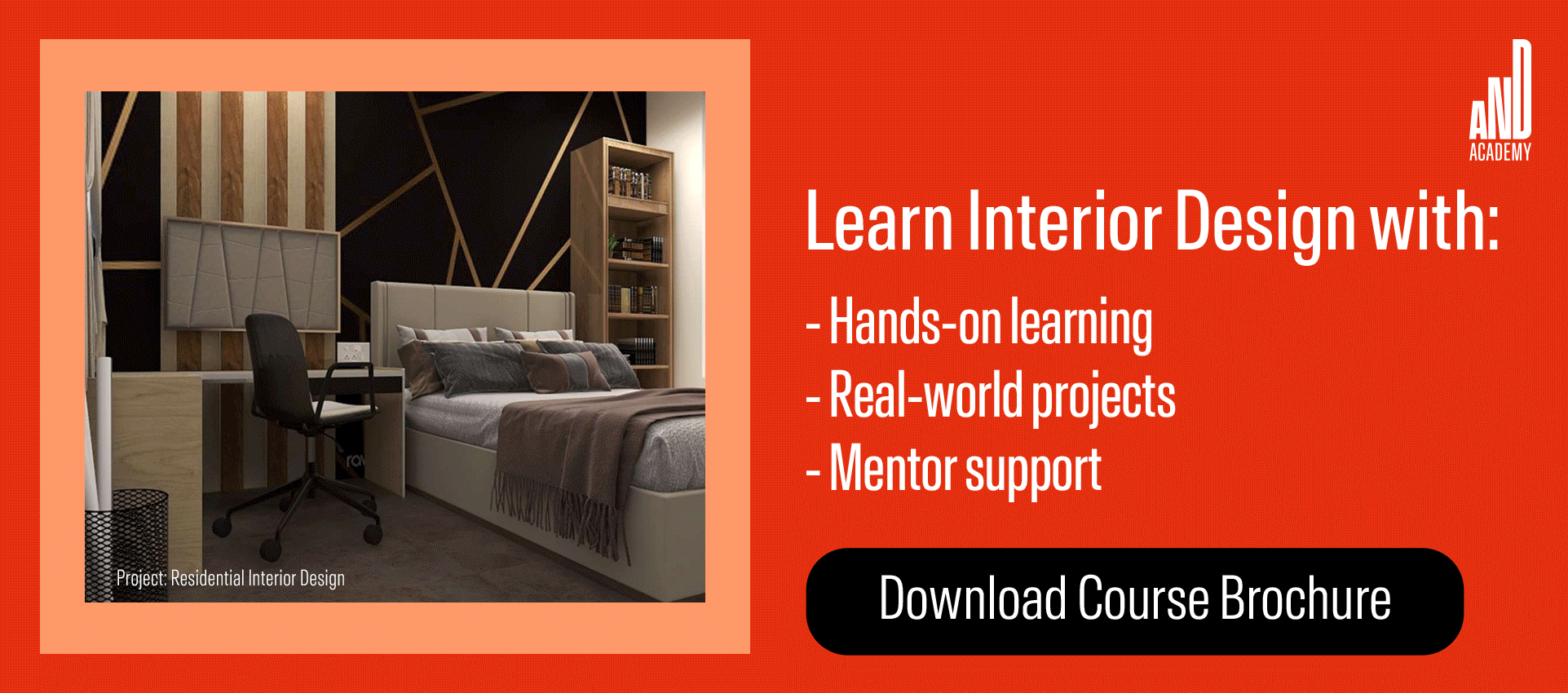
Proportion and scale
The principle of proportion and scale is concerned with how objects and pieces of furniture fit into the space being transformed by the interior designer. Typically, large spaces encourage the adoption of larger, heavier items of furniture, while smaller spaces work best with lighter, more delicate objects.
Emphasis
Creating a focal point in a room, for example, by hanging a striking piece of artwork above a sofa or creating an ornate mantelpiece around a fireplace, is how emphasis is used in interior design. This central point of focus provides the designer with a point they can keep referring back to when designing the rest of the room.
Contrast
Contrast is a tool used by designers to create a dramatic statement in a room. This can be achieved through the use of dark and light spaces, contrasting textures on furnishings, monochromatic colour palettes in the wallpaper, or by throwing opposite design styles together in one room.
Details
As we’ll see later, a key skill of the interior designer is having a keen eye for detail. Whether it's the crockery chosen for a display cabinet in the kitchen or the taps used in the bathroom, details can make a huge difference to the overall feel of a space and be a useful yet simple tool for enhancing a design.
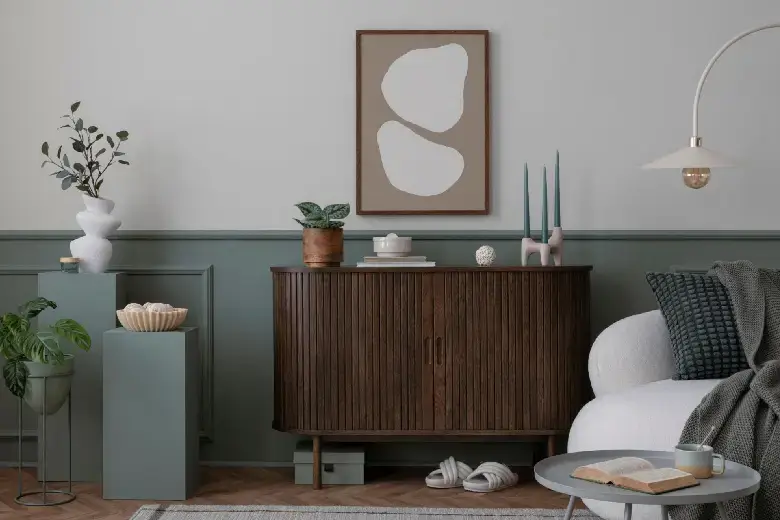
2. What is interior decoration?
Interior decoration is concerned with the visual aesthetic of an interior space; how it is painted, furnished, and embellished. Interior decorators will use their knowledge of style and trends to beautify their clients’ interior living or working areas with furniture and accessories while attempting to accurately reflect their clients’ wishes. To succeed in the field of interior decoration, in-depth knowledge of colours, fabrics, interior trends, room layouts, and furniture design is crucial, as is establishing close working relationships with skilled craftspeople, such as upholsterers and carpenters.
A brief history of Interior decoration
Interior decoration isn’t only a recent trend; humans have long been interested in embellishing and beautifying their homes. In ancient times, animal hides, stones, and plants were used by cave dwellers to decorate their living spaces, and in ancient Egypt, the houses of the rich were frequently adorned with precious metals and stones as a signifier of wealth and opulence.
Moving into the Middle Ages in Europe, interior decoration shifted towards the adornment of religious buildings such as churches, cathedrals, and monasteries. Defining characteristics of this Gothic period included the use of heavy, carved furniture, and intricate stone carvings.
By the Renaissance period, interior decoration began to be recognized as an art form in and of itself, thanks to the influential and inspirational work of Italian artists such as Leonardo da Vinci and Michelangelo. More exotic materials, such as ivory, hardwood, and ebony, from further afield were incorporated into interior decoration at this time.
In the 18th and 19th centuries, the middle classes had become more interested in interior decoration due in part to the rise of the Arts and Crafts movement and in part to the reduction in the price of well-crafted yet on-trend furniture. The reduction in the price of furniture meant that the latest styles were more affordable and accessible to a wider range of people in society and prompted a wider interest in interior decoration.
In the 20th century, popular interior decoration styles, under the influence of different cultures and religions, became more diverse. Clean lines and minimalism broke through in the early 20th century, while by the 1950s and 1960s, a mid-century modern style proved to be extremely popular with middle-class households.
Principles of interior decoration
Interior decoration is often considered to be more of a subset of interior design than a leading field in its own right and, rather than having its own set of principles, follows the principles outlined by interior design. The core elements of interior design focus on the visual aesthetics of a space and how those aesthetics reflect the style of the homeowner or company. The placement of furniture, accessories, decorative objects, and fabrics plays a central role in interior decoration while specific colour schemes are adopted to bring about a cohesive look or design.
What are the differences between interior design and interior decoration?
While there is some overlap between interior design and interior decoration, the two terms should not be used interchangeably. Interior decoration is concerned with improving the visual aesthetics of a space while interior design is concerned with meeting all the needs of a client in a space, such as how that space functions, how it enhances well-being, how it complements and assists those who inhabit the space, and how it looks.
It can be helpful to think of interior decoration as a subset of interior design, with interior decoration focusing on the aesthetic of an interior while interior design covers a much broader spectrum of what an interior needs to contain to meet the needs of its inhabitants and visitors.
3. What does an interior designer do?
With a focus on the principles of interior design, interior designers seek to make indoor living and work spaces attractive, accessible, safe, and highly functional for those who inhabit or work in them. They do this by making key decisions about both the space itself and the essential and decorative items which furnish it, such as furniture, lighting, colour schemes, and fabrics.
A leading component of working as an interior designer is getting to know clients and customers intimately; this would include their needs, desires, goals, and motivations. This knowledge, combined with a deep understanding of interior design principles, enables an interior designer to better design a space that truly meets their client’s needs while ensuring the space complies with health and safety legislation, accessibility standards, and broader community guidelines (in a shared community space). For the interior designer, functionality and aesthetic appeal go hand-in-hand.
Responsibilities of an interior designer:
- Understand the client’s needs, goals, and budget for the project
- Create a design plan
- Sketch designs
- Use computer software to finalize and share designs
- Calculate the estimated overall cost of implementing the design
- Estimate a timeline for the project
- Conduct meetings with clients to ensure their satisfaction
- Find new clients and projects
Key skills of the interior designer
If you’re considering a career in interior design, knowing the skills you’ll need to succeed in the field can help you ascertain your fit for this exciting role. Here’s a rundown of the skills you’ll need as an interior designer:
Creativity
As you might expect, an interior designer is typically someone who has a natural sense of creativity, imagination, and flair for visualizing and creating “looks” that appeal to a wide range of clients. Looking at fine art, graphic design, photography, and sculpture, an interior designer will often use their knowledge and appreciation of the visual arts combined with their creative talents when seeking inspiration for a specific design.
Knowledge of interior design principles
An interior designer seeks to create aesthetically pleasing, functional, accessible, and safe spaces for their clients. To do this, a deep knowledge and understanding of interior design principles is essential. Interior design principles don’t just concentrate on the aesthetic or visual aspects of interior design but also provide best practices for creating balance, harmony, and rhythm to enhance the well-being of inhabitants and visitors.
Attention to detail
An interior designer will need to be interested in getting the details right to fully reflect their client's preferences and personality. This might be achieved through the use of wall hangings, plants, candles, or even the type of fabric chosen to cover the cushions. Attention to detail is also essential to showing off a space to its best advantage and ensuring it lives up to its full potential.
Knowledge of current trends
If a designer wants to stay in demand with clients, they will need to be up to date with the latest interior design trends and technologies. Clients will expect their interior designer/s to be fully briefed on which concepts, colours, and furniture designs are in fashion and which are deemed to be out of date. Technology can also transform a room, and working knowledge of touchless tech and the Internet of Things (IoT) will give a designer an edge over their competition.
Organization skills
Project planning is a huge part of the interior designer’s role. An interior designer will need to manage timelines and budgets for each project, as well as coordinate with the clients and external players, such as builders and carpenters. This level of project planning and people management requires extensive organizational skills.
Communication skills
Communicating with clients, tradespeople, and colleagues, requires diplomacy, clarity, and tact from an interior designer. With the role requiring collaboration between vastly different groups of people, the interior designer needs to be able to adjust their language and communication style depending on who they’re talking to ensure everyone is aligned.
Knowledge of sustainable practices
Due to the recognition of the human impact on climate change among both businesses and individuals, an interior designer is expected to have in-depth knowledge of sustainable practices, materials, and technologies. Clients and customers are also increasingly likely to want to redesign their homes and working areas using methods and materials that are not only sustainable but promote sustainable behaviours within the space.
Sketching skills
Despite the advances in sketching and collaboration software, the ability to sketch out preliminary concepts by hand is still a valued skill in interior design. Creating quick sketches enables a designer to showcase concepts, make suggestions, and quickly give clients a preliminary idea of the final design before any further work or effort is invested in the project.
Knowledge of materials and products
Interior designers should have in-depth knowledge of materials and products and how they can be used to create functional and beautiful homes and workplaces. From furniture and fabrics to lighting and accessories, an interior designer should know the best ways to implement and coordinate these items as well as where best to source them.
Knowledge of computer-aided design (CAD)
Computer-aided design (CAD) enables interior designers to visualize projects and designs for their clients, share their designs with colleagues and contractors, and adjust and enhance designs with ease.
Here are a few student projects by AND learners that might help you familiarise yourself with the skills required to succeed in the field:
- Residential Design Project by Pawanjot Singh
- Commercial Design Project by Prathyusha Reddy
- Residential Design Project by Aakriti Sharma
4. What does an interior decorator do?
An interior decorator is primarily concerned with the aesthetics of a space and decorating it to both beautify it and meet client requirements. Incorporating important design elements such as colour palettes, furniture, fabrics, decorative items, and personal pieces, an interior decorator is primarily concerned with creating an aesthetic impact and putting together a visually pleasing environment.
Responsibilities of an interior decorator might include:
- Meeting with clients to discuss projects and understand their requirements
- Creating budgets for material and labour
- Putting together project timelines
- Creating sample designs
- Choosing furniture, paint, and other materials
- Managing purchases
- Supervising work by external contractors on the project

Key skills of the interior decorator
If you’re interested in launching a career as an interior decorator, having a good understanding of the skills needed in the field can help you understand how well-suited you are to this career choice. Let’s take a look at the skills you’ll need in this role.
Creativity
As a career path that focuses on creating aesthetically pleasing interior spaces for clients, creativity is a vital skill for interior decorators. An interior decorator will need to be able to visualize the transformation of a space, as well as be able to communicate and create that vision.
Attention to detail
A key part of an interior decorator’s role is to carefully select and arrange decorative items, furniture, and fabrics to bring about a cohesive and attractive interior ‘look’. Attention to detail is therefore needed to ensure the most appropriate and visually pleasing items are chosen and arranged to make the most of the space. This is also true of colour palettes and paint or wallpaper choices.
Colour sense
A thorough understanding of colour theory and how to apply it is a core skill required by interior decorators. Knowledge about how to use colours to enhance atmosphere, and mood, and bring about harmony is also extremely valuable in this career.
Communication skills
An interior decorator will need to be able to communicate clearly with a range of different stakeholders and invested parties and convey messages between them throughout a project. Those involved in an interior design project might include the interior designer’s own agency or team members, the clients who have commissioned the interior design project, and tradespeople and contractors who might work on specific elements of the design implementation. Knowing how to effectively communicate with different professionals and individuals and ensure everyone is aligned is therefore key.
Problem-solving
Problem-solving is a useful skill in many areas of life. As an interior decorator, creative solutions to design challenges will frequently be needed due to different hurdles, such as limitations of budget or space, or a strict timeline, an interior decoration project might come up against.
Knowledge of materials and products
Interior decorators are required to have a good understanding of materials and products, including furniture, fabrics, flooring, lighting, and accessories. Understanding how these elements can be implemented and arranged to create different effects in the home or workplace is an important interior decoration skill.
What are the differences between interior designer and interior decorator roles?
While there is some overlap between the two roles, a marked distinction between an interior designer and an interior decorator is that an interior decorator is primarily focused on the aesthetics of an interior, while an interior designer focuses on both the aesthetics and the functionality of an interior and how the two work harmoniously together. In addition, an interior designer seeks to meet the needs and goals of those who use the space, and therefore works to design an interior with those needs and goals in mind; an interior decorator, on the other hand, is simply improving the space from an aesthetic perspective.
5. Educational requirements of interior designers vs interior decorators
Whether you’re interested in launching a career in interior design or interior decoration, you’ll want to start your journey by learning the skills and theory required to become a trusted professional in the field. Here are the different educational and training requirements of interior designers and interior decorators.
Educational requirements of interior designers
Those looking to launch careers in interior design have a few options open to them in terms of how they onboard the desired skills and knowledge needed to practice in the field. Some choose to undertake a bachelor’s degree in interior design at a recognized university, while others start with a related degree such as architecture, graphic design, or fine art before learning interior design skills later via a course, apprenticeship, or on-the-job training. Others wishing to become interior designers do not have a bachelor’s degree at all, but instead learn the required skills via an accredited course or Interior Design Diploma that offers a combination of theory and practical skills, usually in addition to the completion of a portfolio that can be used to demonstrate their talents to potential employers or clients.
Educational requirements of interior decorators
Interior decorators are allowed to practice their trade without formal qualifications or a university degree. However, certification from a recognized educational establishment will always increase a professional’s value in the eyes of employers and clients and demonstrates the interior designer’s commitment to their profession.
While no formal education is required, for those interested in a career in interior decoration, it’s a good study with a program that provides accreditation from recognized institutions such as Certified Interior Decorators International (CID) and the Interior Design Society (IDS).
6. Which career is right for you? Interior designers vs interior decorators
If you’re considering launching a career in either interior design or interior decorating, understanding the demand and salaries in these creative fields will be an important factor in your decision-making process. Let’s take a look at what you can expect.
Demand for interior decorators and interior designers
Interior decorators
According to the Bureau of Labor Statistics in the US, the demand for interior decorators is currently high, with the industry expecting to see a 19% increase in employment opportunities between 2019 and 2026 alone. In India, the demand for interior decorators is also said to be rising. Rapid global growth in the sector is due to the increasing interest in home renovations and remodelling projects among individuals seeking to reflect their tastes and personalities through their furnishings, colour schemes, and general home decor. In addition, and partly due to an increase in remote working that came about during and after the Covid-19 pandemic, more individuals want to invest in beautifying the spaces they are spending increased amounts of both work and leisure time in.
Interior designers
Between 2017 and 2021, the global interior design services market saw a growth of 5.8% with a valuation of $115 reported in 2022. It’s believed the demand for interior designers stems from developments in real estate, with a rise in demand for both commercial and residential real estate combined with an increase in consumer spending power. Continuous urbanization of cities around the globe has also contributed, creating numerous employment opportunities for those with interior design skills and knowledge.
Interior decoration and interior design are both rewarding and creative fields to pursue those willing to train in the required skills necessary to succeed in them. With its additional focus on functionality, accessibility, and safety–in addition to its many aesthetic principles and best practices–you may find that training in interior design provides you with a broader range of clients and employment possibilities and offer a more diverse long-term career than interior decoration, which is limited to offering clients a purely aesthetic viewpoint. However, with demand for both interior designers and interior decorators currently strong, and only looking to strengthen further, the decision to work as an interior designer or an interior decorator will ultimately come down to a personal preference for which area you are most interested in working in.
Salaries of interior decorators and interior designers
Salary of interior decorators
The salary range of interior decorators in the US is currently $36,760 to $56,134 per year, according to Salary.com. In India, meanwhile, Indeed.com gives the average salary for interior decorators as ₹3,41,585 per year.
Salary of interior designers
The salary range of interior designers can often vary depending on the country they’re working in. So, in the US an interior designer’s yearly salary currently falls between $52,579 and $95,000, while in India they can earn upto ₹19,00,000 per annum.
7. Why interior designers can become decorators but not vice versa
As this article has demonstrated, interior decorating can be viewed as a subset of interior design rather than as a distinct field of its own. Both practices are interested in creating visually appealing living and work spaces, but interior design goes a stage further, delving into enhancing the functionality, accessibility, and safety of a space while acknowledging and meeting the needs, desires, and goals of those who use it. For this reason, an interior designer can work as an interior decorator because of the sufficient overlap between the two occupations in terms of creating aesthetically well-designed spaces, but an interior decorator would need significant additional training and knowledge in the areas of user-centred design, functionality, and accessibility to take on interior design work. They would also need to be well-versed in interior design principles.
Conclusion
In this article, we’ve run through the fundamental elements of interior decoration and interior design, including their histories and principles, before covering what working in these fields looks like in practice. Covering key skills, education, demand, and salaries, we’ve outlined the essential differences (and the similarities!) between these two careers, and why interior designers can work as interior decorators but not vice versa.
Here are some additional resources that may be useful in your learning efforts:
- Watch this session by Snehanshu Mukherjee, Founding Partner at T.E.A.M and Mansi Almadi, an Interior Designer at Studio Lotus
- Talk to a course advisor to discuss how you can transform your career with one of our courses.
- Check out our Interior Design courses - all courses are taught through live, interactive classes by industry experts.
- Take advantage of the scholarship and funding options that come with our courses to overcome any financial hurdle on the path of your career transformation.
Note: All information and/or data from external sources is believed to be accurate as of the date of publication.



